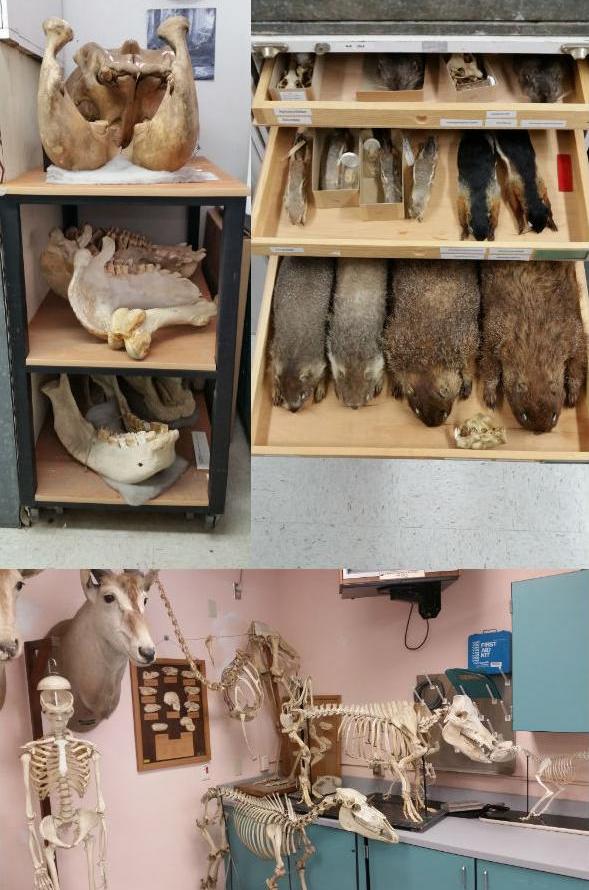Skeleton Crew
SDSU's Mammalogy Collection boasts an impressive collection of skins and skeletons from creatures great and small.

The Curious Aztec takes you behind the scenes of scientific investigation and discovery taking place at San Diego State University. This month, we're exploring the creepier, crawlier side of our research.
Somewhere on campus at San Diego State University, there are Tasmanian devils, kangaroos, mountain lions, tigers, a fin whale, a gray whale, grizzly bears, lemurs, cape buffalo, hippos and rhinos. They may lack muscles, organs and the spark of life, but still—you’ve got to admit that’s pretty impressive.
This bony menagerie constitutes the SDSU Mammalogy Collection, curated by J. David Archibald, professor emeritus of biology, and Annalisa Berta, professor of biology, and managed by biologist Mike Van Patten. The collection contains approximately 6,000 individual specimens of hundreds of different species, both terrestrial and marine, many of them quite rare.
SDSU professors started the collection sometime in the 1930s, if not a little earlier. From the '70s through the early '90s, it was housed in the building that is today Professional Studies and Fine Arts, but back then was a library. Today the majority of the collection resides in a large room in the basement of South Life Sciences. Some animals are mounted in living poses, others while away their days in cabinets and drawers.
Critter collection
Catalog item No. 1 is an opossum. Aside from its tail, the end of which has been snapped off and reattached some time ago, it’s in remarkably good condition for an animal that’s older than the California State University system. And this opossum isn’t even the oldest animal in the collection; some of the preserved specimens date back to the 1860s.
Among the rarer species are a Sumatran tiger, three different species of rhinoceros (Sumatran, white and black), and a Steller’s sea cow—an extinct relative of manatees that grew to the size of a small sailboat.
Archibald describes the collection as one of the best in Southern California. Others might have greater numbers of individual species, but few can match the SDSU Mammalogy Collection’s breadth and diversity.
The collection supports the education of undergraduates and graduate students studying biology, anthropology and geology at SDSU. Many graduate students use various specimens for their master’s theses. More than 3,000 students work with the collection every year, Archibald noted.
“It’s very valuable for the students to have opportunities to work with the collection,” he said. “There’s no substitute for holding these specimens in your own hands and seeing how everything fits together. You can’t get the same experience with online learning, just seeing the anatomy on a website.”
Bone donations
Where do the bones come from? Donations, mostly. SeaWorld and the San Diego Zoo regularly contribute animals that have passed away. Marine Corps Base Camp Pendleton donates animals that have perished on base. Some individuals also provide animals. One woman donated her beloved pet wolf after its death.
After SDSU acquires a specimen, Van Patten and students prep them for long-term storage. That involves another group of tiny assistants: dermestid beetles that swarm over a carcass and consume its flesh, cleaning the bones.
“A good colony of beetles can clean a squirrel in a couple weeks,” Van Patten said.
Enjoy that mental image.
A quick plug: J. David Archibald's new book, Aristotle's Ladder, Darwin's Tree, was released in August to glowing reviews. It takes an authoritative look at the history of biologists wrestling with how to visualize taxonomic relationships. In addition to the fascinating history, the book features some truly gorgeous images of evolutionary branching.



